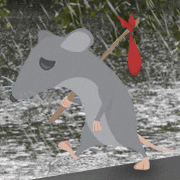|
i would drive a mitsubishi wrx e: kind of weird to see world records that aren't tajima tbh Control Volume fucked around with this message at 15:51 on May 3, 2015 |
|
|
|

|
| # ? May 15, 2024 19:36 |
|
Anyone got any good Scott/Amundson documentaries? I just watched a doc about Krackauer's climb of the tallest mountain in Antarctica and they talk a lot about the two expeditions, and the contrast between the approaches of the two teams. I also found this marvellously damning and pointed interview with one of his biographersquote:You made a reputation taking apart the Scott legend. But if he was so incompetent, how did he become a national hero? I've found a Susan Solomon-centric doc but it's pretty kind to him compared to the picture you get from the interview and I'm after some more critical stuff and something that elevates Amundson who was, by all accounts a far more sensible and professional explorer Fatkraken fucked around with this message at 17:12 on May 3, 2015 |
|
|
|
Fatkraken posted:Anyone got any good Scott/Amundson documentaries? I just watched a doc about Krackauer's climb of the tallest mountain in Antarctica and they talk a lot about the two expeditions, and the contrast between the approaches of the two teams. I also found this marvellously damning and pointed interview with one of his biographers Good interview. It's entertaining how much Scott is revered in Britain, in spite of everything mentioned in that article. What was really interesting was seeing the presentation on the two expeditions in a museum in Oslo: They were sympathetic to Scott but pointed out the numerous problems he created for himself, with Amundsen using tried and true methods and being far more successful because of it.
|
|
|
|
Plucky Brit posted:Good interview. It's entertaining how much Scott is revered in Britain, in spite of everything mentioned in that article. What was really interesting was seeing the presentation on the two expeditions in a museum in Oslo: They were sympathetic to Scott but pointed out the numerous problems he created for himself, with Amundsen using tried and true methods and being far more successful because of it. I think lately there has been a bit of a backlash against scott and shackleton has become the british antarctic explorer of choice, because he was more interested in getting people back alive than heroic death.
|
|
|
|
Fatkraken posted:Anyone got any good Scott/Amundson documentaries? I just watched a doc about Krackauer's climb of the tallest mountain in Antarctica and they talk a lot about the two expeditions, and the contrast between the approaches of the two teams. I also found this marvellously damning and pointed interview with one of his biographers For a first-hand account of the Scott expedition a good one is The Worst Journey in the World, by Apsley Cherry-Garrard. He was a member of the expedition and talks a lot about the polar party's mistakes. The big ones I remember him mentioning are:
The Worst Journey in the World, Ch. 19 posted:In the broad perspective opened up by ten years’ distance, I see not one journey to the Pole, but two, in startling contrast one to another. On the one hand, Amundsen going straight there, getting there first, and returning without the loss of a single man, and without having put any greater strain on himself and his men than was all in the day’s work of polar exploration. Nothing more business-like could be imagined. On the other hand, our expedition, running appalling risks, performing prodigies of superhuman endurance, achieving immortal renown, commemorated in august cathedral sermons and by public statues, yet reaching the Pole only to find our terrible journey superfluous, and leaving our best men dead on the ice. To ignore such a contrast would be ridiculous: to write a book without accounting for it a waste of time.
|
|
|
|
My family took a trip to Pike's Peak when I was four. We all got altitude sickness, the worst was me - I hurled all over everyone after being up there for a couple of hours. Totally recommend it for family trips.
|
|
|
|
Van Kraken posted:For a first-hand account of the Scott expedition a good one is The Worst Journey in the World, by Apsley Cherry-Garrard. He was a member of the expedition and talks a lot about the polar party's mistakes. The big ones I remember him mentioning are: What does 'sacrificing dogs' and 'pony snowshoes' mean?
|
|
|
|
MOVIE MAJICK posted:What does 'sacrificing dogs' and 'pony snowshoes' mean? And what's depot placement and how does it relate to sacrificed dogs ?
|
|
|
|
MOVIE MAJICK posted:What does 'sacrificing dogs' and 'pony snowshoes' mean? Sacrificing dogs means planning your expedition with the assumption that you will kill and eat your dogs as you go (and feed them to each other too) Pony snowshoes presumably means snowshoes for ponies.
|
|
|
|
MOVIE MAJICK posted:What does 'sacrificing dogs' and 'pony snowshoes' mean? Pony snowshoes are just adorable so let's all focus on that.
|
|
|
|
MOVIE MAJICK posted:What does 'sacrificing dogs' and 'pony snowshoes' mean? Amundsen had planned on killing dogs for food at set points on his journey, viewing them as an expendable resource. Scott, on the other hand, refused to kill dogs or ponies even when it became clear that he wouldn't be able to place depots where he wanted. One Ton Depot (which Scott died 11 miles away from) was placed 30 miles north of where he wanted, because Scott refused to kill ponies for food. Depot-laying (which was done with ponies) was also hindered because Lawrence Oates didn't trust the snowshoes designed for ponies, and left them behind at Camp Evans. e: unpacked robinhood posted:And what's depot placement and how does it relate to sacrificed dogs ? Depot placement was setting out beforehand to leave caches of supplies for the eventual push for the pole. These were placed before the Antarctic winter, so that Scott would be able to set out for the pole when winter ended. Van Kraken fucked around with this message at 20:32 on May 3, 2015 |
|
|
|
MOVIE MAJICK posted:What does 'sacrificing dogs' and 'pony snowshoes' mean? Some sled dogs weaken faster than others and you don't want to feed them past some point. Instead, you sacrifice them and feed the meat to your men/the other dogs to keep them going longer. Scott brought ponies to Antarctica to haul and they kept sinking into the snow, which they tried to fix by making snowshoes for them. Didn't work too well.
|
|
|
|
Don't eat Balto 
|
|
|
|
Iirc ven when they were in crisis Scott refused to let them abandon their sleds of rocks. Basically he was an egotistical prick who shouldn't have been in charge of the lives of so many men and wasn't prepared for the expedition.
|
|
|
|

|
|
|
|
Lucky fall, not to hit anything on the way down really, or wind up in that weird hole in the rock, or just smear your face down the rock or something. And water at the bottom.
|
|
|
|
bartlebyshop posted:Some sled dogs weaken faster than others and you don't want to feed them past some point. Instead, you sacrifice them and feed the meat to your men/the other dogs to keep them going longer. Scott brought ponies to Antarctica to haul and they kept sinking into the snow, which they tried to fix by making snowshoes for them. Didn't work too well. Mostly because they didn't actually use them...
|
|
|
|
If you think ponies are weird there's the curious case of the Yukon camels to think about.
|
|
|
|
If he's that close to a cliff edge shouldn't he already be roped up?
|
|
|
|
a pipe smoking dog posted:If he's that close to a cliff edge shouldn't he already be roped up? standing near a cliff on level ground isn't really cause to tie in, but you also don't put your foot half-over the ledge and then lean out either basically everyone else in that picture is an ok distance from the edge, & should have told slips mcgee to get back from the edge
|
|
|
|
OMGVBFLOL posted:standing near a cliff on level ground isn't really cause to tie in, but you also don't put your foot half-over the ledge and then lean out either I'M NOT TOO CLOSE, DAD!
|
|
|
|
DerekSmartymans posted:I'M NOT TOO CLOSE, DAD! gently caress YOU DAD I'M PLAYING EVEREST TOURIST WHENEVER I WANT TO
|
|
|
|
http://www.theguardian.com/world/2015/may/04/nepal-earthquake-climbing-firms-call-off-everest-season-for-second-year-running Dream dead again.
|
|
|
|
Van Kraken posted:
Speaking of caches and polar exploration, this is still the happiest I've ever seen a man: https://www.youtube.com/watch?v=vC8gJ0_9o4M "This is day 86 on my full return South Pole Expedition 2011/2012. I`m quite hungry and about to pick up my last cache by my second pulk which I left on the way in. As a part of my motivational plan I have on purpose not made notes on what goodies I have left behind in the cache.. and on this last one, I didn`t expect very much"
|
|
|
|
Speaking of doomed voyages by inexperienced people using untested technologies, here's the story of S. A. Andrée's arctic expedition: http://www.damninteresting.com/andree-and-the-aeronauts-voyage-to-the-top-of-the-world/
|
|
|
|
monster on a stick posted:5.1 quake isn't that big of a deal. That's about 500 times smaller than the 7.8 quake. It is log 10 for shaking amplitude but that doesn't really tell the whole story- for all intents and purposes going from 5.1 to 7.8 is actually about 11000 times as bad going by energy released, which more directly correlates to how much poo poo goes down. But as you were getting at, most likely these aftershocks won't do much to everest- too far away and too weak.
|
|
|
|
The Richter scale measures the energy released by an earthquake at the epicenter. It is only an approximation of earthquake severity, in terms of "how much shaking, and how bad was the shaking" at any given point away from the epicenter. Its main utility is in comparison: you can broadly say, "this" quake is x times more severe than "that" quake. Even then, though, two earthquakes of the same Richter magnitude may have wildly different hypocentral depths; the much deeper quake might be less damaging than one near the surface. For measuring how damaging an earthquake is at a specific point, there is another tool: the Modified Mercalli Intensity Scale. quote:Abbreviated Modified Mercalli Intensity Scale Seismologists and geologists produce maps showing Mercalli intensities after major earthquakes:  Here you can see that while the severity of shaking generally falls off as a function of the distance from the epicenter, there are blobs and shapes and it's not a perfect circle. The fact that, as with most large earthquakes, it's actually a cluster of numerous related seismic events across a region, further complicates things. Mercalli maps can be directly compared to each other, which gives a highly visual and intuitive sense of the severity and damage from two different earthquakes. Here, for example, is a Mercalli map of the 1989 Loma Prieta quake in California:  These two maps are not at the same scale, but you can still get a sense of how spread out and significant the red areas of the Nepal quake are, compared to the relatively focused point of high-intensity shaking in the SF Bay Area region. Most of the highly-populated areas of San Francisco Bay were subjected to no more than VII or VIII, whereas a huge, 200km long area at the south of Nepal's most populated region was subjected to VIII or IX level shaking. Note as well that VII or VIII shaking is sufficient to destroy most unreinforced masonry structures. In California, such buildings are extremely rare; in Nepal, they're the majority. The City of SF was subjected to level VI or VII shaking at the most; that was enough to collapse an older double-decker freeway, and drop one segment of roadway on the upper deck of the bay bridge. Kathmandu was subjected to VIII or IX shaking. Leperflesh fucked around with this message at 17:30 on May 4, 2015 |
|
|
|
https://www.youtube.com/watch?v=Bk3sLHZzZRI E: Seriously though those earthquakes are crazy. Are they rebuilding nepal with real buildings, or are we gonna get another one of these down the road?
|
|
|
|
it's all about ground motion variability. a mag 5 could be as damaging as a mag 6 if there's just the right gm amplification or other near field effects. it's not likely, but it could happen--especially if the 5 is 1000x more likely to happen than a 6. this is what probabilistic seismic hazard assessment is about--weighing chance of occurring, variability and potential spectral accelerations, yea sure an 8 means gently caress thats a lot of energy but it just depends on the actual motions produced. generally subduction zones produce huge earthquakes but their motions are usually dampened quickly and don't have the right frequency content to wreck havoc on buildings that are susceptible (usually these buildings have periods of 0.1-0.4s) to damage--but there could be some freak attenuation like at mexico city which was 300km away mmi is an ok qualitative quantifier for post-damage but theres a lot of bias in what gets reported, when it's asked, different cultures respond a bit differently to initial "feelings", etc.
|
|
|
|
bartlebyshop posted:Some sled dogs weaken faster than others and you don't want to feed them past some point. Instead, you sacrifice them and feed the meat to your men/the other dogs to keep them going longer. Scott brought ponies to Antarctica to haul and they kept sinking into the snow, which they tried to fix by making snowshoes for them. Didn't work too well.
|
|
|
|
Being careless with/about equipment is like the biggest loving warning sign that this razors-edge journey into the unknown in a harsh and unforgiving wilderness is doomed. Like, I could understand if the equipment was destroyed in some unforseeable accident. But if your expedition team simply loses kit, it's time to pack it in and go home. You can't have that. Just to bring it back full circle, remember when that first canadian-asian climber, Shah-Clorfine, had on her facebook page or whatever, a list of equipment she was getting, and it was completely generic? You could tell this person had no climbing or mountaineering experience just by the fact that she didn't have equipment preferences. If you don't know what brand and model of crampons you prefer, you're not ready to summit Everest. Leperflesh fucked around with this message at 19:13 on May 4, 2015 |
|
|
|
gannyGrabber posted:E: Seriously though those earthquakes are crazy. Are they rebuilding nepal with real buildings, or are we gonna get another one of these down the road? depends, are you going to pay to import steel & experienced design & construction crews or are they going to be left to rebuild using only the materials and expertise they have at hand
|
|
|
|
Another thing that gets me about the Scott Expedition is that, according to both Scott and Cherry, Birdie Bowers was a logistical genius. He organized all the crates, tracked all the food, calculated rations, managed work schedules, and generally took care of running the day-to-day operations of the expedition. The problem with this? Bowers wasn't hired for the polar expedition. He was crew on the Terra Nova - a member of the ship party. He was so helpful there that Scott promoted him to the shore party. Which means that Scott hadn't actually hired anyone to manage all of that. I guess he planned to do it himself.
|
|
|
|
MOVIE MAJICK posted:How far would the average goon make it on an Everest expedition before they died? sponsor me and we could find out! I'll climb Everest for GBS and Plant the Grenade Flag at the Summit for all of goondom, if you all pay my way. bean mom fucked around with this message at 00:25 on May 5, 2015 |
|
|
|
Zyla posted:sponsor me and we could find out! I got 5 on it.
|
|
|
|
Leperflesh posted:Being careless with/about equipment is like the biggest loving warning sign that this razors-edge journey into the unknown in a harsh and unforgiving wilderness is doomed. http://web.archive.org/web/20120524043600/http://www.myeverestexpedition.com/sponsors.php Cooking Gear: Insulated mug for warming hand - 1 of each Tent - 1 spoon good quality - 1 set Only thing she's really got a brand for was a GoPro helmet camera.
|
|
|
|
MorgaineDax posted:http://web.archive.org/web/20120524043600/http://www.myeverestexpedition.com/sponsors.php And she still summitted!
|
|
|
|
NLJP posted:Speaking of caches and polar exploration, this is still the happiest I've ever seen a man: Judging by his reaction to those cheez doodlez, I'm gonna go ahead and guess that guy posts here.
|
|
|
|
Leperflesh posted:The Richter scale measures the energy released by an earthquake at the epicenter. It is only an approximation of earthquake severity, in terms of "how much shaking, and how bad was the shaking" at any given point away from the epicenter. Its main utility is in comparison: you can broadly say, "this" quake is x times more severe than "that" quake. Even then, though, two earthquakes of the same Richter magnitude may have wildly different hypocentral depths; the much deeper quake might be less damaging than one near the surface. I really like this scale. It reminds me of the Fujita Scale for tornadoes, which is also based on damage. It's not perfect, but it's much more human scale.
|
|
|
|

|
| # ? May 15, 2024 19:36 |
|
I'm just now reading 'South' by Ernest Shackleton, incredible story and for a change no one dies! They went through some poo poo, from living on nothing but penguin and seal meat (The Gentoo penguin was favoured due to the meaty breasts and legs) to having to sail for 2 weeks on basic rations in an open boat in the Antarctic waters. Despite being written 100 years ago, the writing is remarkably fresh (although his constant listing of the latitudes gets a bit dull) and you really get a feel that they worked together well (apart from what happened in the next paragraph) as a team....Shackleton seemed to be a really sound leader. They also had a ship's cat, the marvellously named Mrs.Chippy, who sadly had to be shot once the Endurance was crushed, but his (Mrs.Chippy was found to be a Tom long after the name stuck) spirit lives on, and was a cause of controversy on the expedition- quote:Mrs. Chippy, a tiger-striped tabby, was taken on board the Endurance by Harry McNish, the carpenter nicknamed "Chippy" (as in chips of wood, chips or chippy being a standard British nickname for a carpenter or for a man named Carpenter[1]), as a ship's cat. One month after the ship set sail for Antarctica it was discovered that, despite her name, Mrs. Chippy was actually a male, but by that time the name had stuck. He was described as "full of character" by members of the expedition and impressed the crew by his ability to walk along the ship's inch-wide rails in even the roughest seas. After the ship was destroyed, Shackleton decided that Mrs. Chippy and five of the dogs would not survive, and on 29 October 1915 recorded:  Also rather sweet is the list of the dog's names (although they don't appear to list 'friend of the family' which was on the relief expedition boat) quote:The known dogs' names were Rugby, Upton Bristol, Millhill, Songster, Sandy, Mack, Mercury, Wolf, Amundsen, Hercules, Hackenschmidt, Samson, Sammy, Skipper, Caruso, Sub, Ulysses, Spotty, Bosun, Slobbers, Sadie, Sue, Sally, Jasper, Tim, Sweep, Martin, Splitlip, Luke, Saint, Satan, Chips, Stumps, Snapper, Painful, Bob, Snowball, Jerry, Judge, Sooty, Rufus, Sidelights, Simeon, Swanker, Chirgwin, Steamer, Peter, Fluffy, Steward, Slippery, Elliott, Roy, Noel, Shakespeare, Jamie, Bummer, Smuts, Lupoid, Spider, and Sailor Read more about him on his Wiki page http://en.wikipedia.org/wiki/Ernest_Shackleton Then read the book. Rondette fucked around with this message at 10:16 on May 5, 2015 |
|
|





































